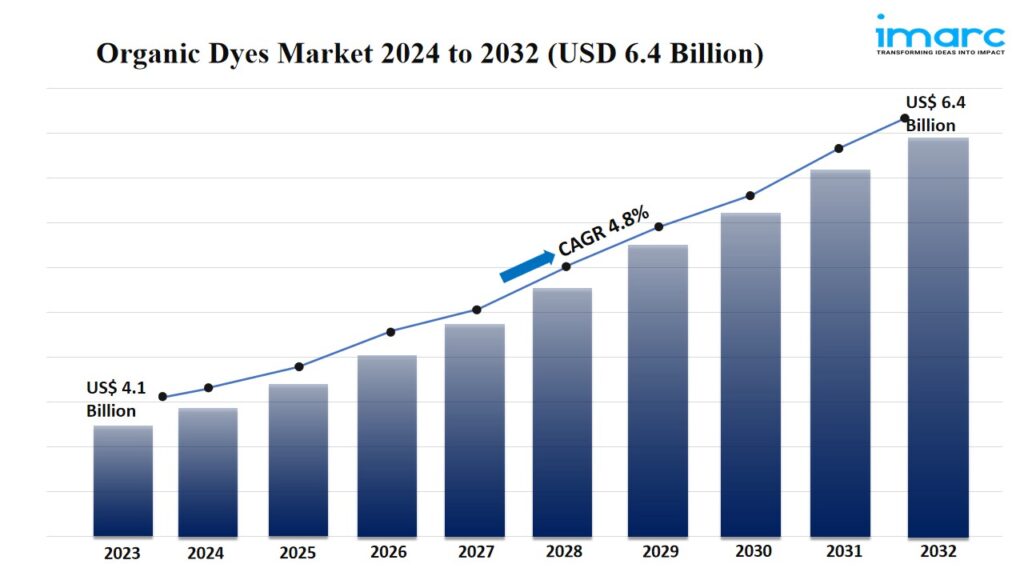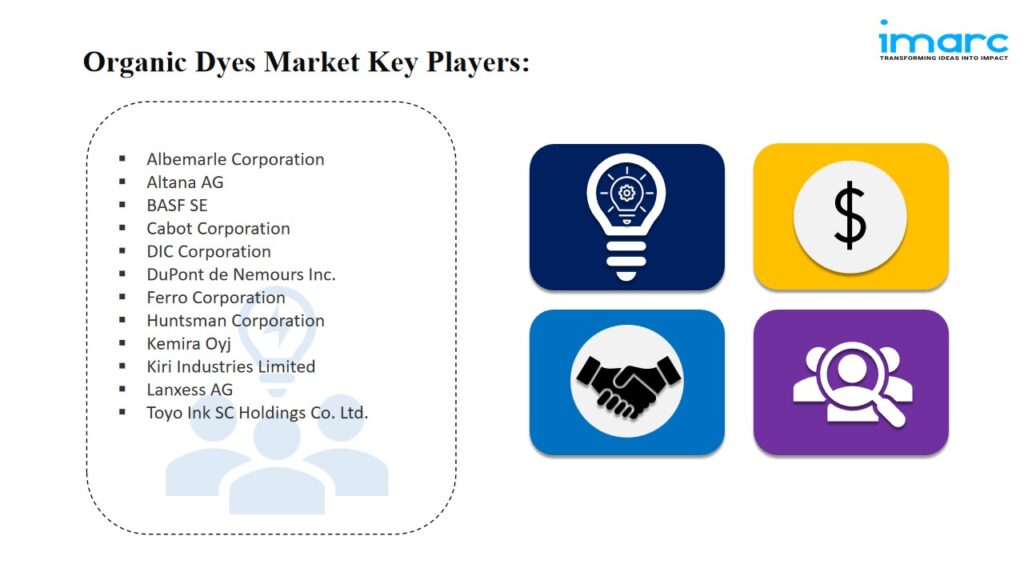
IMARC Group’s report titled “Organic Dyes Market Report by Product (Acid, Basic, Reactive, Direct, Disperse, Sulphur, and Others), Source (Animal, Plant, Minerals), Application (Paints and Coatings, Textiles, Plastics, Printing Inks, and Others), and Region 2024-2032”. The global organic dyes market size reached US$ 4.1 Billion in 2023. Looking forward, IMARC Group expects the market to reach US$ 6.4 Billion by 2032, exhibiting a growth rate (CAGR) of 4.8% during 2024-2032.

For an in-depth analysis, you can refer sample copy of the report: https://www.imarcgroup.com/organic-dyes-market/requestsample
Factors Affecting the Growth of the Organic Dyes Industry:
Individuals are becoming more conscious about the environmental impact of their purchases, which is driving the demand for eco-friendly products, including organic dyes. These dyes are derived from natural sources and are perceived as safer alternatives to their synthetic counterparts, which are often criticized for their hazardous waste and potential toxicity. Governing bodies and environmental agencies in many countries are implementing stringent regulations on the use of chemicals in dyes, prompting manufacturers to adopt organic variants that have a minimal ecological footprint. This shift is not only in response to regulatory compliance but also aligns with the sustainability goals of numerous industries, such as textiles and cosmetics.
Advances in biotechnology and green chemistry are enabling manufacturers to produce organic dyes more efficiently and with greater color diversity and stability. Techniques like microbial fermentation and the extraction of pigments from agricultural waste are not only environmentally sustainable but also cost-effective, making organic dyes more competitive with synthetic alternatives. These technological improvements are enhancing the performance of organic dyes, making them more appealing for a wide range of applications, including textiles, printing, plastics, and cosmetics. The ability to produce vibrant, durable colors with lower environmental impact is attracting industries towards organic dyes.
Organic dyes are being used to enhance the appearance of food products without compromising their organic status. People are becoming more health-conscious and skeptical of synthetic additives, leading to a strong preference for natural colorants derived from sources, such as fruits, vegetables, and plants. This shift towards natural ingredients is supported by regulatory bodies that enforce strict guidelines on food coloration, further driving the demand for organic dyes. The appeal of organic dyes in food and beverages lies in their ability to meet consumer demands for purity, safety, and sustainability, encouraging manufacturers to incorporate these natural colorants into their product lines.
Leading Companies Operating in the Global Organic Dyes Industry:
